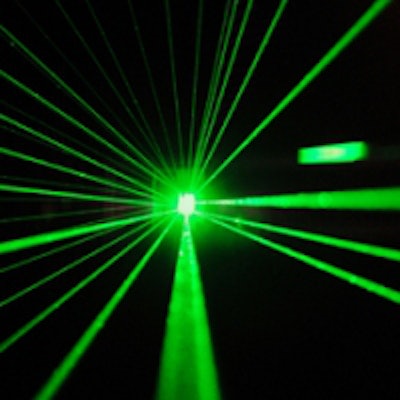
A recent study in the Journal of the American Dental Association found that one in eight general practice patients have dentin hypersensitivity (DH). With those odds, it's inevitable that practitioners will have to manage it. Could lasers be a treatment option?
A new study in General Dentistry (May-June 2013, Vol. 61:3, pp. 66-71) comparing the efficacy of diode lasers (DL) with stannous fluoride and potassium nitrate gels in the treatment of DH found that the "940-nm DL was not only efficacious, but also brought about improved immediate relief as compared to stannous fluoride and potassium nitrate gels in the reduction of DH."
Now, a meta-analysis to be published next month in the Journal of Dental Research lends additional support to the use of certain lasers to treat DH (June 2013, Vol. 92:6, pp. 492-499). Researchers at the University of L'Aquila School of Dentistry compared the effectiveness of several different types of lasers, and the results were promising: Two middle-output-power lasers and one low-intensity laser performed well.
"Er:YAG, Nd:YAG, and GaA1As [diode] lasers appear to be efficacious in reducing DH," the researchers wrote.
While those lasers performed better than a placebo, another laser included in the study did not fare so well: "Meta-analyses of the baseline-end of follow-up changes in pain revealed no differences for Er,Cr:YSSG vs. placebo," the researchers noted.
Multiple treatment options
Several approaches have been proposed for in-office treatment of DH, including desensitizing agents, iontophoresis, adhesives, and resins, according to the study authors. More recently, lasers have been added to the list. While recent studies have established laser DH treatment as safe, there remained a need to evaluate their efficacy, the authors noted.
For this systematic review, they stratified the data according to laser type and changes in pain level, when compared with a placebo or no treatment. They also paid attention to the safety of laser application while noting adverse events.
To find usable studies, the researchers searched multiple databases: MEDLINE, Cochrane Controlled Clinical Trial Register, Cochrane Database of Systematic Reviews, Database of Abstracts of Reviews of Effects (DARE), CINAHL, Science Direct, and SCOPUS.
Included studies had to have adult test subjects in randomized clinical trials that compared DH laser treatment with a placebo or no treatment. They were excluded if the subjects' pain perception was altered by drugs or systemic diseases, if DH was not assessed by scale or score, or if they did not report numerical data.
Upon completion of the search, the study authors were left with 13 randomized, controlled trials with four laser types that were compared to a placebo: Er,Cr:YSSG, Er:YAG, Nd:YAG, and GaA1As. A quality assessment and statistical analysis was performed.
Er,Cr:YSSG did not fare well in three studies in which researchers demonstrated a nonsignificant change in DH (p = 0.07), although the small number of included studies made detecting significant differences difficult.
The rest performed better in studies that were appropriately similar. The results from four studies of Er:YAG versus placebo (p = 0.0002), three studies of Nd:YAG versus placebo (p = 0.02), and eight stud ies of GaAlAs versus placebo (p < 0.00001) indicated a significant change in pain level in favor of laser use. High and significant heterogeneity was present in all four comparisons.
The researchers found only one adverse incident recorded in all of the included studies: One patient reported postlaser application pain.
The meta-analysis helped to provide a pattern of better treatment results with certain laser treatments compared to a placebo, but further work needs to be done, including looking at the cost-effectiveness of laser treatment, the study authors concluded.
For now, it appears as though lasers are an effective option in the DH treatment toolkit.



















